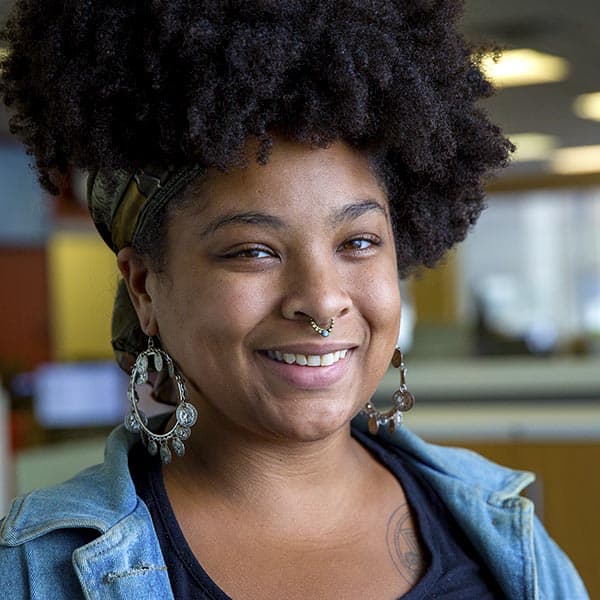Advertisement
A new place for public art comes to the Charlestown Navy Yard
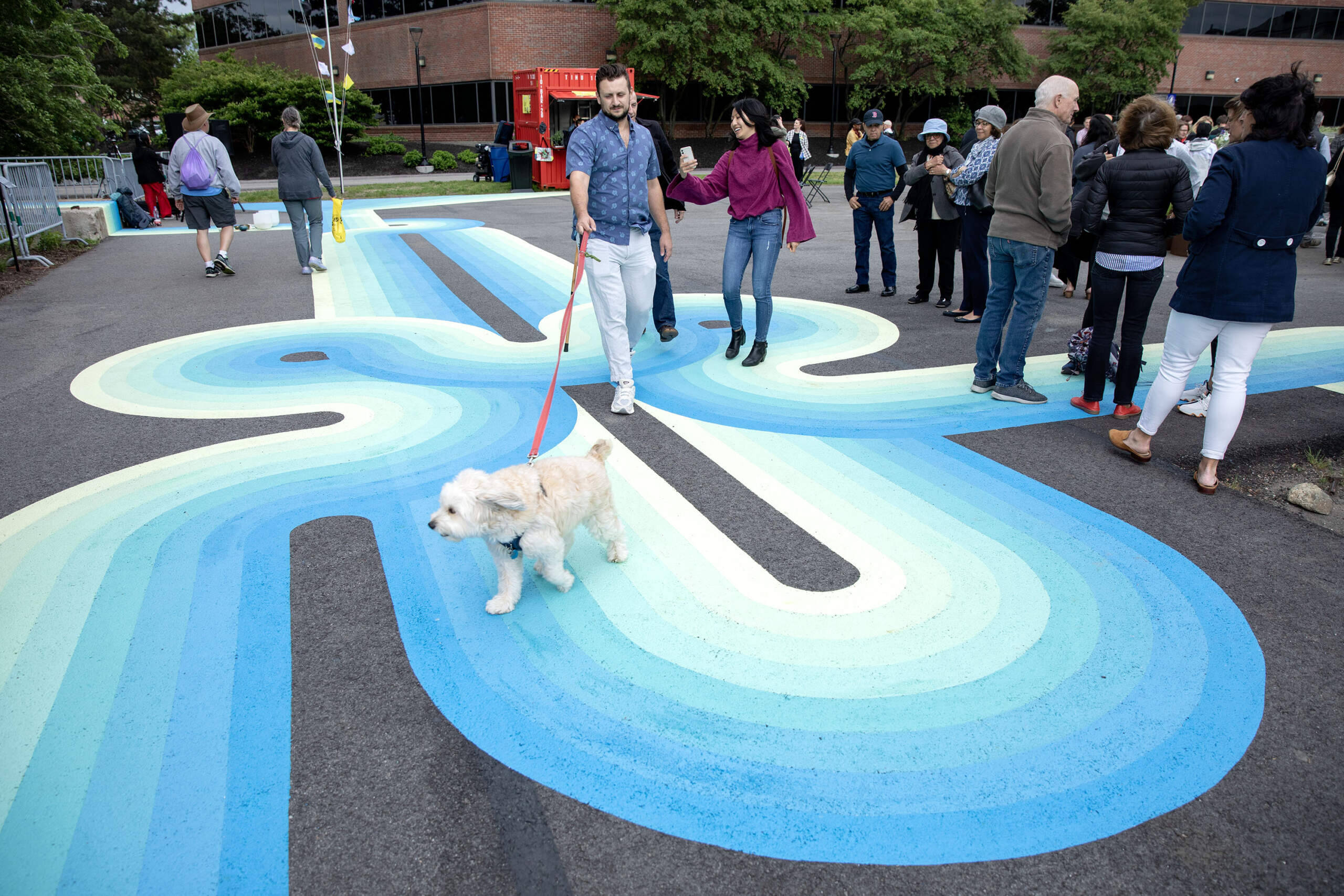
A naval yard is an unexpected place to see public art. That’s exactly why Now + There, an arts organization with the goal of using temporary public art to create change, felt it important to transform an empty lot in the Charlestown Navy Yard into something inspiring. “First of all, it’s an active Navy Yard,” says Kate Gilbert, the executive director of Now + There. “So you have the traces of the industrial complex there, as well as just open, vacant space.”
The federal site, operated by the National Park Service, isn’t far from the Tobin Bridge, which cuts through Charlestown. “And on one side of the bridge, you have one of the largest housing units in a very ethnically, racially, socioeconomically diverse population that historically has not felt comfortable coming over to the Navy Yard,” Gilbert points out.
For the next three years, Now + There, in partnership with the National Park Service and Boston Harbor Now, will be exploring Charlestown Navy Yard’s past, present and future, through a different lens. The new venture, Lot Lab, transforms the empty space by utilizing public art that is meant to facilitate public engagement around a certain theme. “Repair and mend, that's the theme this year,” Gilbert says. “Repair and mend the space as well as social relations.
It’s a decided departure from Now + There’s previous temporary installations, which have lived across various neighborhoods in Boston. Now, the organization can utilize the Lot Lab to feature and highlight multiple artists making innovative and thought-provoking art that engages the public. Artist Kyle Browne is leading flag-making workshops with Charlestown youth while three inaugural artists — Boston-based Massiel Grullón and Sam Fields and international artists Ghada Amer — all navigate themes of identity and togetherness in their installations, which will be up through October 31.
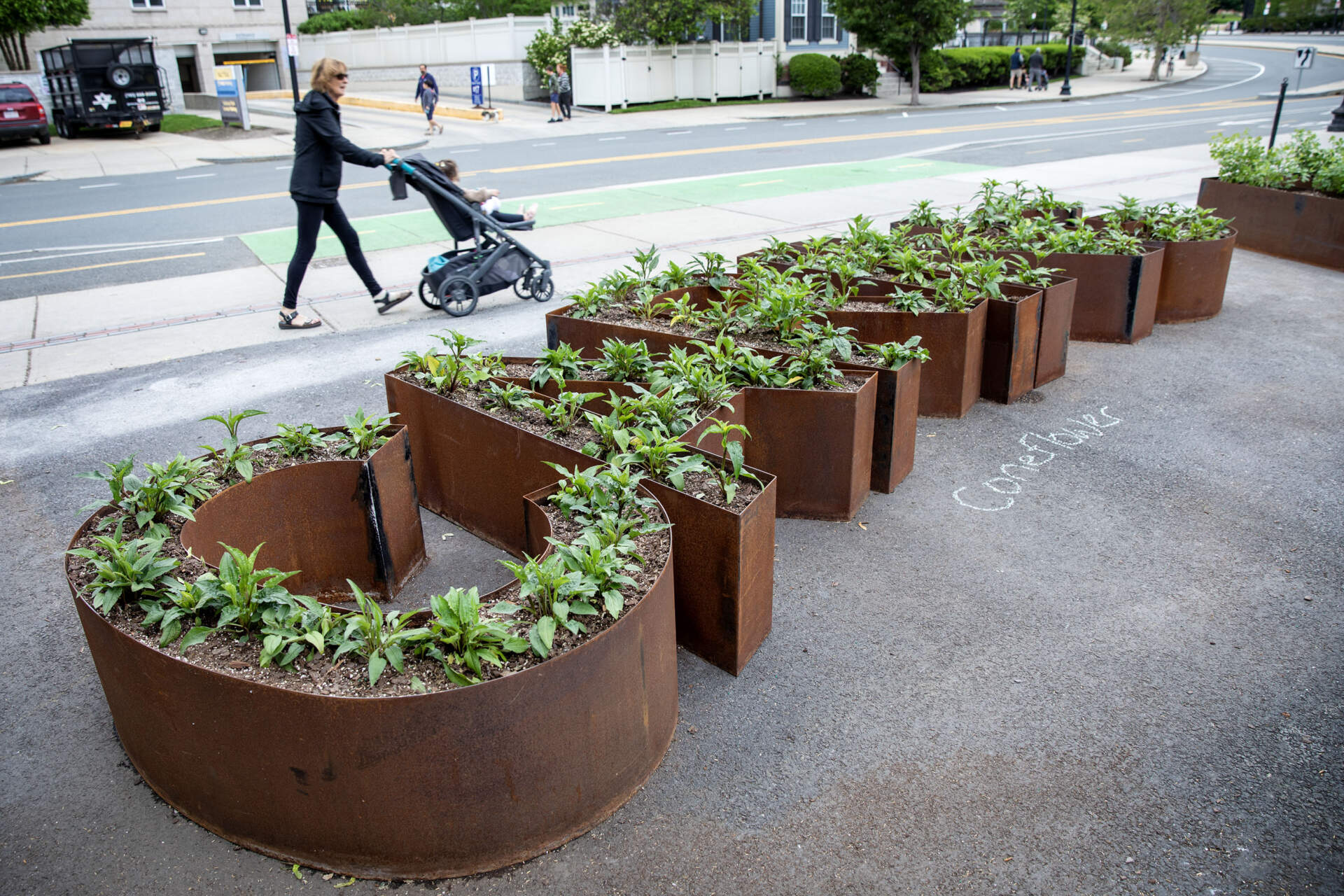
Ghada Amer’s “Women’s Qualities” circles an empty part of the lot. Metal planters, welded into the shapes of letters spell out different attributes, which Amer sourced from surveys asking people what they feel the qualities of women are. “You can see that there are words like ‘resilient,’ ‘strong,’ ‘beautiful.’ It's more of an idea of a woman who doesn't exist or if she did, the world wouldn’t like her anyway.” While highlighting these “qualities,” Amer’s work also questions whether there are unrealistic expectations for women. The planters, filled with plants native to New England, are also commentaries on gardening, a form of labor usually associated with womanhood.
Boston native Grullón has painted a little bit of everything, from murals to leather jackets to banners. Her style often alchemizes visual languages from the 1970s with space-age design and graphic shapes. But for the Lot Lab, Grullón had to think horizontally, instead of a vertical approach, to artmaking for her installation “Knotical Waves.” Her canvas is not a wall or a structure — it’s what visitors walk on. ”I learned a lot from being able to do a design installation that large scale on the ground,” Grullón says. “You learn something new every day, you know. And that just helps you grow as an artist.”
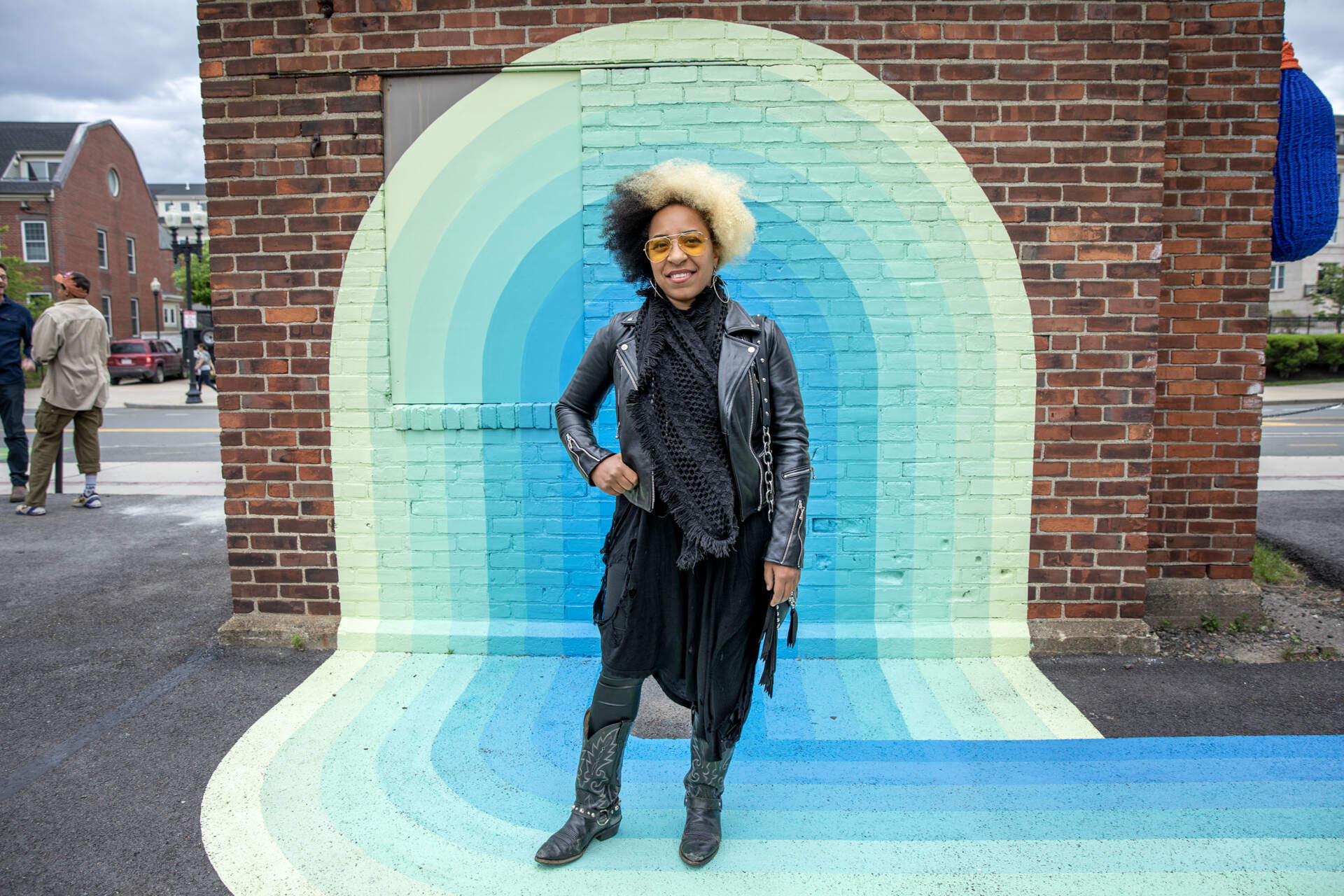
Visitors walk on and around the gradated, blue lines that snake along the asphalt, colors that were inspired by Boston Harbor. Others can take photos in an arch made by the lines that jump up onto the side of a shed onsite. Grullón’s piece is having its intended impact. “So the whole installation is meant to be interactive because it kind of leads the viewer to walk around it and also be part of it,” she notes. “My work is very interactive because you can put yourself into it.” There is an additional hope that by following “Knotical Waves,” visitors will bump into each other and perhaps conversations will happen if they do.
For both Grullón and artist Sam Fields, this will be their most large-scale installations to date. Fields, who lectures part-time at The School of the Museum of Fine Arts, is an artist who often works with fiber and fabric to make incisive commentary on the intricacies of women and labor. Nine current and former students of Fields have assisted her in weaving a massive wall hanging called “Stay.” It will be installed in July but for now, visitors can enjoy a preview of the artwork at the Lot Lab. “I was inspired by the older rigging in sailboats,” says Fields. “And so this ‘stay’ is what wraps around the mast and helps hold it up. And it is attached around what is called a ‘mice.’”
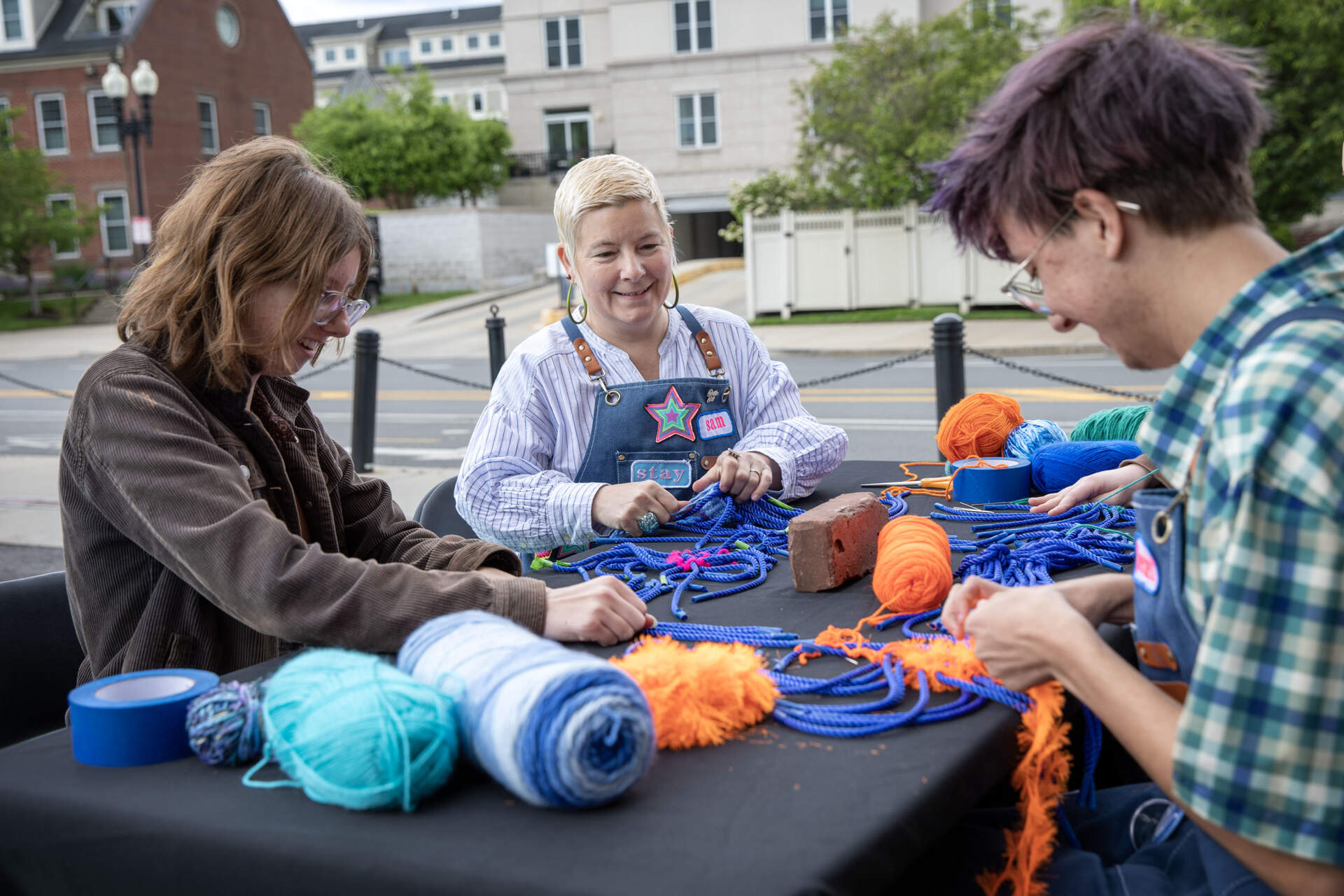
As Fields completed more and more research about the rope riggings, she considered the word “stay” and what it means to different groups of people. “What does it mean to stay? What does it mean to stay soft? What does it mean to stay here? What does it mean to stay out?” Fields says. “The piece is responding to the sight of the Navy Yard and its political, racial, colonial history, its economics of rope-making and physical location and the current climate of Charlestown.”
The 360 eyes (a permanent loop at the end of a rope) required to make “Stay” have been a particular site of inspiration for Fields. She and her assistants could simply knot rope together to complete the eyes. But instead, they’re splitting and mending rope together, a process called splicing that Fields found upon further research makes the rope stronger. “I thought the splice is a really beautiful analogy for community building in that a splice has multiple strands that have to come undone and then reconfigure themselves to be woven together.”
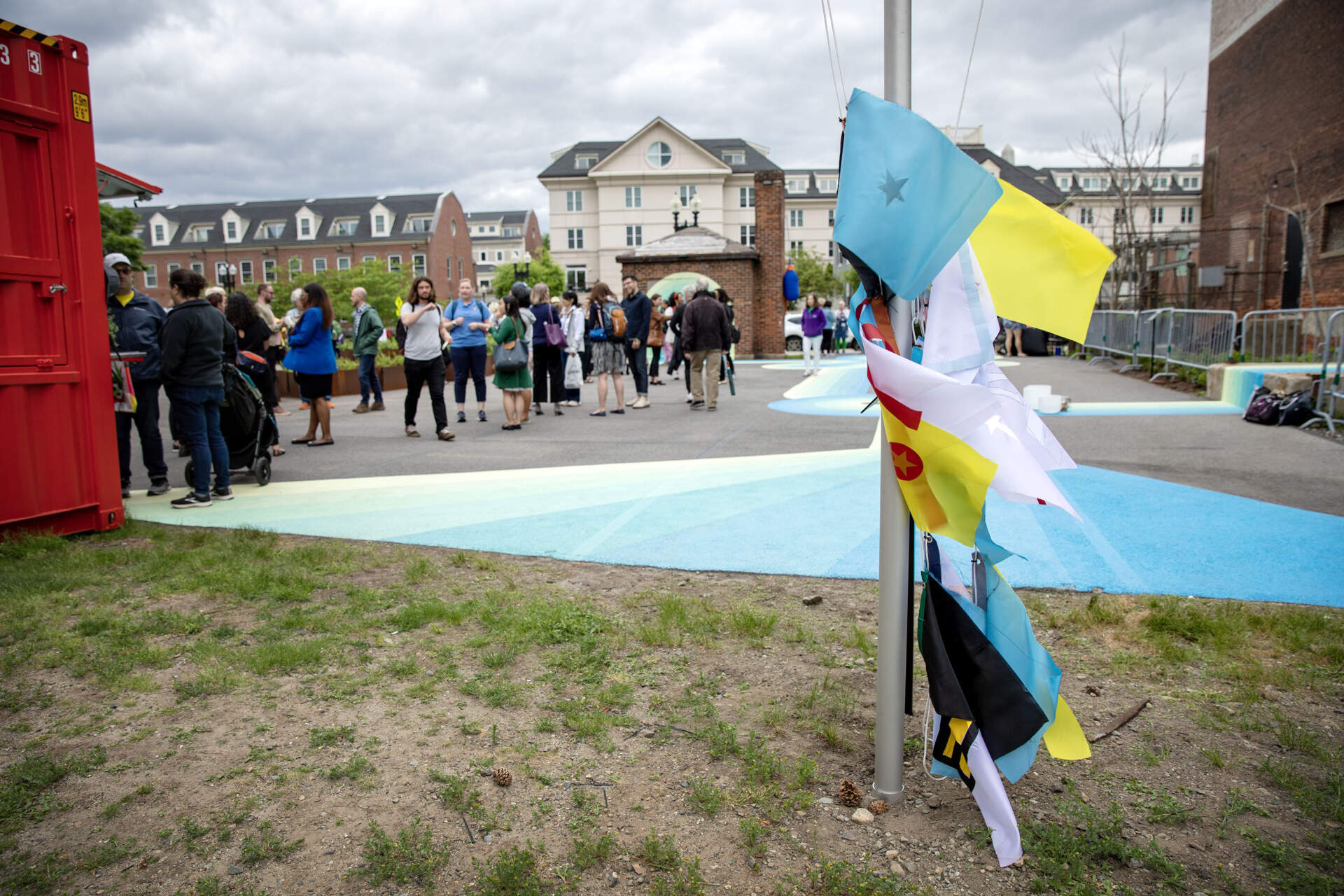
It’s a harkening back to the general theme of repair and mend that is the guiding light for this year at the Lot Lab. While Field’s work heavily engages the past and Grullón and Amer’s the present, Browne’s flag workshops look toward Charlestown’s future. Charlestown children of varying ages have already produced myriad flags. They flap in the wind, hoisted high on a flagpole. “The flags represent who they want to see as the future of Charlestown,” says Gilbert. Some reference existing flags of countries, like the yellow and blue of the Bahamas. Others invent completely new imagery.
The Lot Lab isn’t a static space. It’ll be activated by future partnerships with Company One Theatre and Illuminus Boston, an organization that centers the use of light-based immersive art. Now + There also plans to respond to the people who engage with the Lab as a site of art making. “Our philosophy around public art is that it evolves in relationship to people's inputs,” she says. “We encourage people to come tell us what they think. There's a QR code. We're going to have public art ambassadors there at least twice a week. And, you know, we want to hear and be responsive and invite people to participate.”
